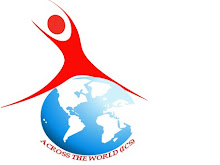For those of you who are intending to work in Saudi Arabia, I thought a brief intro. about the Islamic calender could help you understand a bit the differences in following and counting the months. As for everyone else a new information to add to your knowledge. Enjoy!
The Islamic calendar is used in Saudi Arabia and it consists of 12 months, which are 29 and 30 days long. In effect the Islamic Calendar year is 11 days shorter than the Gregorian calendar year. The other Gulf countries typically use the Islamic calendar for religious purposes, but the Gregorian as secular purposes.
The Hejiri date is the Islamic calendar. It started in the moon year that prophet Mohammed immigrated from Mecca to Medina.
The Islamic Calendar is purely based on lunar cycles. It was first introduced in 638 C.E. by a close companion of the prophet and the second Calipha (Omar Ibn Al-Khatab) Omar consulted with his advisers on the starting date of the new Muslim chronology. It was agreed that the most appropriate reference point for the Islamic calendar was the (Hejira). The actual starting date for the calendar was then chosen on the bases of purely lunar years, counting backwards. The first month in the Islamic calendar is (1st Muharram) of the year of the Hejira.
The Islamic Calendar is purely based on lunar cycles. It was first introduced in 638 C.E. by a close companion of the prophet and the second Calipha (Omar Ibn Al-Khatab) Omar consulted with his advisers on the starting date of the new Muslim chronology. It was agreed that the most appropriate reference point for the Islamic calendar was the (Hejira). The actual starting date for the calendar was then chosen on the bases of purely lunar years, counting backwards. The first month in the Islamic calendar is (1st Muharram) of the year of the Hejira.
The Hejira, which represents the migration of the prophet Mohammed (PBUH) from Mecca to Medina in September 622 C.E., is the central historical event of early Islam. It later led to the foundation of the first Muslim city-state, creating a turning point in the Islamic history.
Islamic months are named as follows:
- Muḥarram محرّم
- Ṣafar صفر
- Rabīʿ al-Awwal ربيع الأوّل
- Rabīʿ al-Thānī ربيع الآخر أو ربيع الثاني
- Jumādā al-Ūlā جمادى الأولى
- Jumādā al-Thānī جمادى الآخرة أو جمادى الثانية
- Rajab رجب
- Shaʿbān شعبان
- Ramaḍān رمضان
- Shawwāl شوّال
- Dhū al-Qaʿda ذو القعدة
- Dhū al-Ḥijja ذو الحجة
The most important dates in the Islamic (Hijri) year are:
1 Muharam (Islamic newyear); 27 Rajab (Isra & Miraj); 1 Ramadan
(First day of fasting); 17 Ramadan (Nuzul Al-Qur'an); Last 10
days of Ramadan which include Laylatu al-Qadar; 1 Shawal
(`iyd al-Fitr); 8-10 Thw al-Hijjah (the Hajj to Mecca); and
10 Thw Al-Hijah (`iyd al-'adhae).
The week days in most of the Islamic countries start as follows:
1st day of the week: Al Sabet- Saturday
2nd day: Al Ahad- Sunday
3rd day: Al Ethnayn- Monday
4th day: Al Thulathaa- Tuesday
5th day: Al Orbeaa- Wednesday
6th day: Al Khamees- Thursday
7th day: Al Jomaa- Friday (and that is the wholly day of the Muslims).



1 comment:
good posting,,
visit me, please,,,
Post a Comment